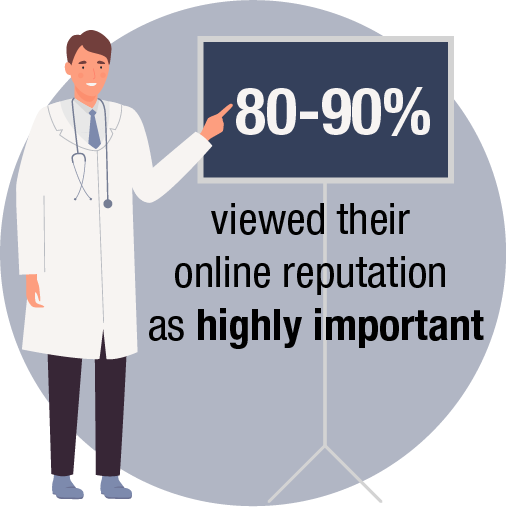Marketers know word-of-mouth is a key component of any successful marketing strategy. As brands discover the importance of social media and incorporate user-generated content into their broader marketing strategy, healthcare organizations must do the same. When it comes to brand building, satisfied patients and caregivers are a healthcare brand’s most valuable assets.
Consumers have been influenced by some medium of user-generated content, whether they realize it or not. Anyone who has read Yelp or Amazon reviews before purchasing a product or service knows that this form of user-generated content drives our consumer decisions more than ever. In a survey conducted by MobiHealthMedia, 80-90% of physicians regarded their online reputations as highly important, and expressed concerns about negative online reviews on Google, Yelp, Healthgrades, Doctor.com, or similar sites. In addition, 95% of Americans trust physicians’ online reviews as an accurate indicator of their quality. In fact, reviews are the most common avenue for potential patients to seek out more specific information after visiting their doctor’s own website¹. Whereas doctors’ websites communicate the information they want us to know, positive or negative reviews tell a more detailed story of the patient experience. A better-informed patient is a patient empowered to take control of his or her healthcare journey.

For caregivers in particular, medical decisions are often made in a time of crisis – when their elderly or disabled loved ones are dealing with new and possibly urgent health conditions and changing medical needs. Without the assistance of a concierge doctor or geriatric care planner, caregivers will make quick and independent judgments to choose the right care provider. When time is of the essence, one positive or negative review can quickly sway a caregiver’s decision. Above all, patients and caregivers are looking for a patient-centered experience, one which inspires confidence that they are receiving the highest quality care. As the American population ages (the number of Americans ages 65 and older is projected to sharply increase from 52 million in 2018 to 95 million by 2060²), younger, more technology-savvy adults will be thrust into caregiving roles. In this digital-centric culture, it is imperative that brands embrace user-generated content as an opportunity to connect more authentically with more prospective patients.
Sources Cited
1. Comstock J. Survey: Nine out of ten doctors worry about negative online reviews. MobiHealthNews. https://www.mobihealthnews.com/content/survey-nine-out-ten-doctors-worry-abo ut-negative-online-reviews. Published May 15, 2018. Accessed August 4, 2021.
2. Mather M, Scommegna P, Kilduff L. Fact sheet: Aging in the United States. PRB. https://www.prb.org/resources/fact-sheet-aging-in-the-united-states/. Published July 15, 2019. Accessed August 7, 2021.

